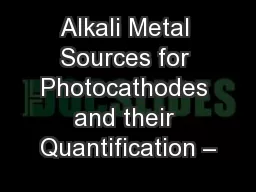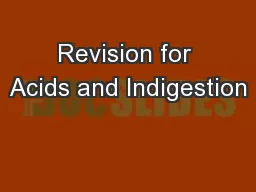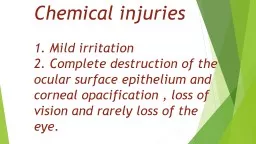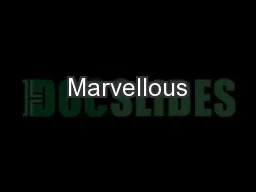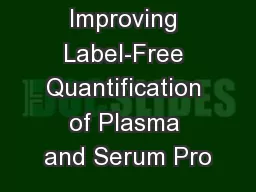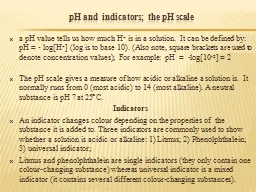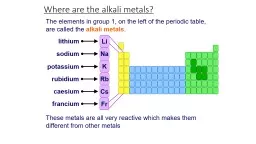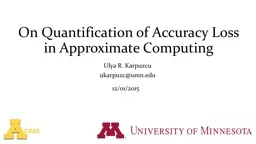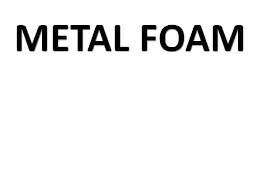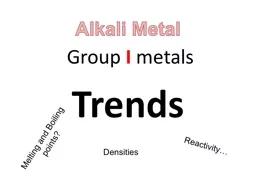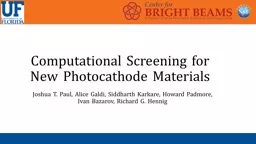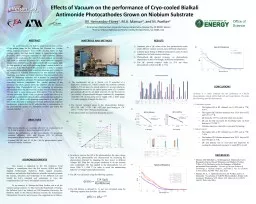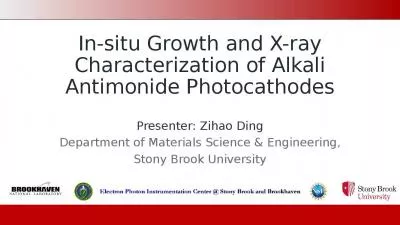PPT-Alkali Metal Sources for Photocathodes and their Quantification –
Author : debby-jeon | Published Date : 2018-10-21
Getter Sources vs Metallic Evaporation Sources Charlie Sinclair Cornell University ret 6242012 UChicago Photocathode Workshop 1 Alkali Na K Rb Cs Characteristics
Presentation Embed Code
Download Presentation
Download Presentation The PPT/PDF document "Alkali Metal Sources for Photocathodes a..." is the property of its rightful owner. Permission is granted to download and print the materials on this website for personal, non-commercial use only, and to display it on your personal computer provided you do not modify the materials and that you retain all copyright notices contained in the materials. By downloading content from our website, you accept the terms of this agreement.
Alkali Metal Sources for Photocathodes and their Quantification –: Transcript
Download Rules Of Document
"Alkali Metal Sources for Photocathodes and their Quantification –"The content belongs to its owner. You may download and print it for personal use, without modification, and keep all copyright notices. By downloading, you agree to these terms.
Related Documents

